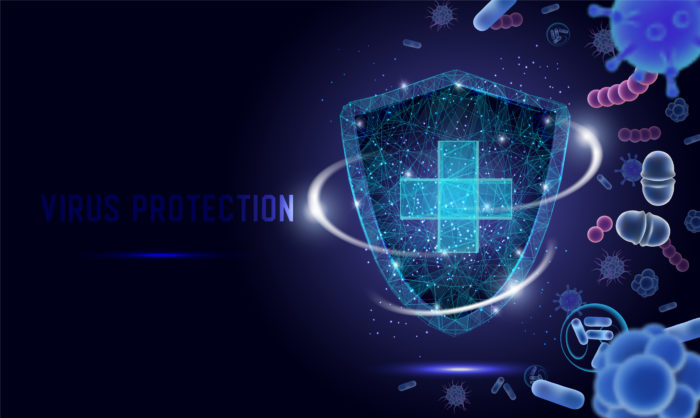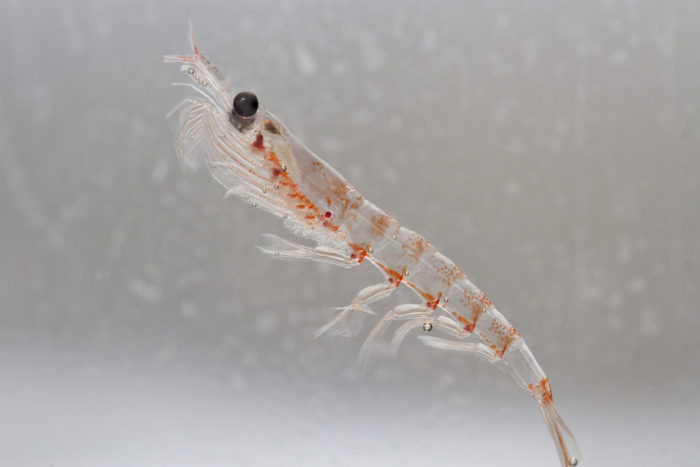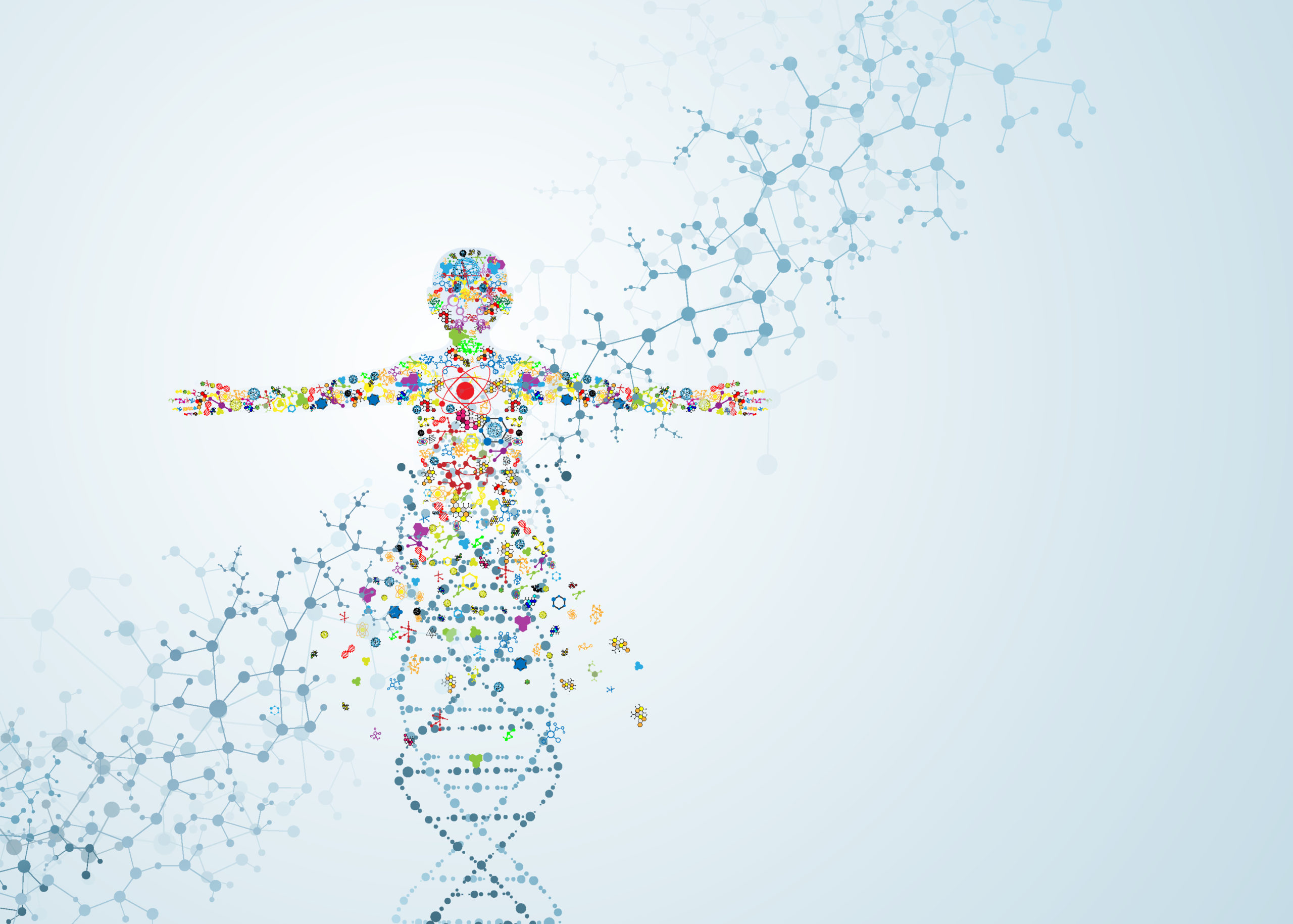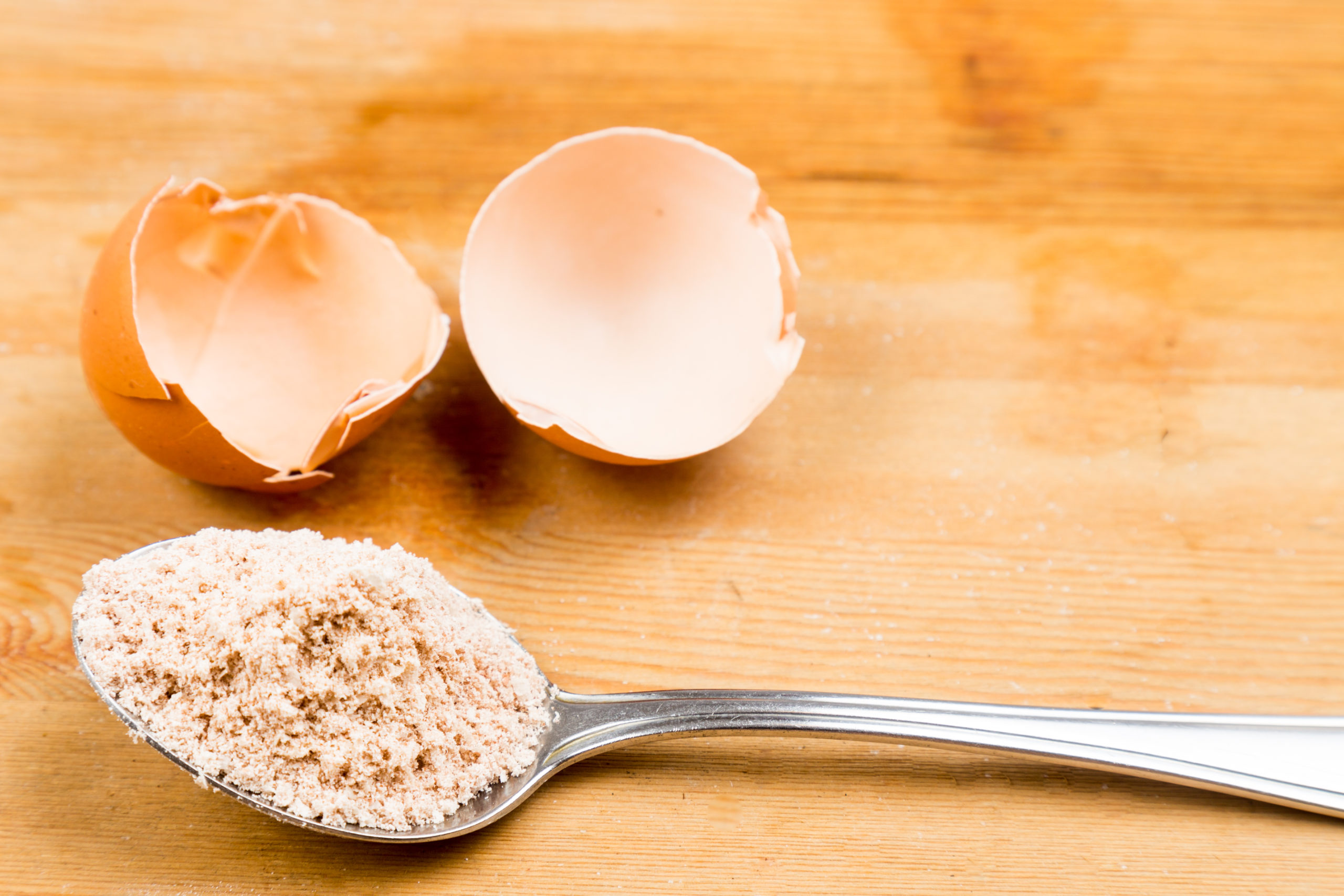
Natural Antiviral Solutions
July 16th, 2021By Will Block
In these troubled times, we have looked to nature to discover some agents that can be considered to be natural antivirals. In so doing, we hope that putting them into our diets, or utilizing them as supplements can be beneficial. The following is a listing of those agents and their validity.
BHT (butylated hydroxytoluene)
Some ‘all-natural advocates,’ reject BHT to a false belief that it is synthetic. But this is not true! According to a whale study (1), BHT is naturally found in the food of some baleen whales! A few years ago, scientific researchers found that this potent antioxidant is naturally synthesized in four freshwater phytoplankton, including a green alga and three cyanobacteria. Its purpose in these organisms is to potently prevent free radical damage.
Phytoplankton are generally regarded as innocent and health-promoting. After all, they are eaten by krill (a type of shrimp, see figure 1), which in turn provide dinner for baleen whales.
The name of the antioxidant found in phytoplankton is butylated hydroxytoluene, otherwise known as BHT. It may be disliked by some, but it is loved by others because of its biochemical and beneficial properties.

Figure 1: A krill, which is a popular food with the baleen whales.
Herpes Virus, and Cold Sores
Most photosynthetic organisms, (including phytoplankton) are exposed to a combination of light and high oxygen concentrations, leading to the formation of free radicals and other strong oxidizing agents. Nevertheless, photoplankton seldom suffer from serious photodynamic and DNA damage in-vivo, suggesting that their cells contain protective antioxidative mechanisms and other protective compounds. Could it be the BHT?
BHT is an FDA-approved food additive for certain salad and cooking oils. It has been found to be an effective natural treatment for several viral conditions including hepatitis B, hepatitis C, the Epstein Barr virus, the herpes virus, and cold sores. (Reference: Wipe out herpes with BHT, John Mann & Steven Wm Fowkes, Megahealth Society Publishing).
Shiitake: Food and Medicine
Lentinula edodes, also known as Shiitake mushroom, has been utilized as food, as well as a medicinal plant. Moreover, compounds isolated from its mycelium and fruiting body have shown several therapeutic properties.
The aim of one study (2) was to determine the antiviral activity of aqueous (AqE) and ethanol (EtOHE) extracts and a polysaccharide (LeP) from Lentinula edodes in the replication of poliovirus type 1 (PV-1) and bovine herpes virus type 1 (BoHV-1). The time-of-addition assay was performed at the times -2, -1, 0, 1 and 2 hours of the infection. The virucidal activity and the inhibition of viral adsorption were also evaluated. Plaque assay was used to monitor antiviral activity throughout the study.
The AqE and LeP were more effective when added at 0 hours of infection, However, EtOHE was more effective at the times 1 hour and 2 hours of the infection. AqE, EtOHE, and LeP showed low virucidal activity, and the inhibition of viral adsorption was not significant.
The results allowed the researchers to conclude that AqE, EtOHE and LeP act on the initial processes of the replication of both strains of virus. The time-of-addition assay was performed at the times -2, -1, 0, 1, and 2 hours of the infection. The virucidal activity and the inhibition of viral adsorption were also evaluated. Plaque assay was used to monitor antiviral activity throughout it.
In this study (3), shiitake, by hot-water extraction and ethanol precipitation, was fractionated by column chromatography, resulting in six polysaccharide fractions. Among these fractions, three were shown to stimulate the functional activation of macrophages including NO production cytokine expression and phagocytosis.
Reishi: Mushroom of Immortality
The use of the Reishi mushroom (Ganoderma lucidum) was first recorded over 2,000 years ago. Reishi was frequently referred to as the “Mushroom of Immortality” in ancient texts. Around 200–250 CE, the ‘Divine Farmer’s Classic of Pharmaceutics’ categorized different varieties of mushrooms based on which part of the body they benefited.
Proponents of Reishi claim it is especially good at modifying the immune system by increasing it when weakened or lowering it when it is too active.
Reishi mushrooms are considered to contain natural antiviral, antibacterial and antifungal substances thanks to the active compounds that they contain. For example, aside from relieving allergies and triterpenes, they offer protection against microbial, viral, and fungal infections.
Gypsy Mushroom
Viral infections are amongst the most common diseases affecting people worldwide. New viruses are emerging all the time and presently we have a limited number of antivirals to combat viral diseases. Yet, Fungi represent a vast source of bioactive molecules, which could potentially be used as antivirals.
Researchers have summarized the current knowledge of fungi as producers of antiviral compounds and discuss their potential applications. They have what is known about the molecular mechanisms and actual targets. Furthermore, the scientists highlight the importance of accurate fungal species identification on antiviral and other natural products studies. (4)
Immunomodulators and antiviral properties of this mushroom could be a potential source to overcome the current pandemic outbreak.
Dengue Virus
Dengue is a mosquito-borne viral infection that has become a major public health concern worldwide. Presently, there is no specific vaccine or treatment available for dengue viral infection.
To look for treatments, Lignosus rhinocerotis, Pleurotus giganteus, Hericium erinaceus, Schizophyllum commune, and Ganoderma lucidum were selected for evaluation of their in-vitro anti-dengue virus serotype 2 (DENV-2) activities. Hot aqueous extracts (HAEs), ethanol extracts (EEs), hexane soluble extracts (HSEs), ethyl acetate soluble extracts (ESEs), and aqueous soluble extracts (ASEs) were prepared from the selected mushrooms. The cytotoxic effects of the extracts were evaluated by the MTT assay.
The anti-DENV-2 activities of the extracts were evaluated in three different assays: simultaneous, attachment, and penetration assays were performed using plaque reduction assays and RT-qPCR assays [see ThermoFisher Scientific]. The effect of the addition of time on viral replication was assessed by the time of addition assay, and a virucidal assay was carried out to evaluate the direct effect of each mushroom extract on DENV-2. The chemical composition of glucans, and the protein and phenolic acid contents in the extracts were estimated as well.
The researchers found that the HAEs and ASEs of L. rhinocerotis, P. giganteus, H. erinaceus, and S. commune were the least toxic to Vero cells and showed very prominent anti-DENV2 activity. The 50% inhibitory concentration (IC50) values of the ASEs ranged between 399.2-637.9 μg/ml, while for the HAEs the range was 312.9-680.6 μg/ml during simultaneous treatment.
Significant anti-dengue activity was also detected in the penetration assay of ASEs (IC50: 226.3-315.4 μg/ml) and HAEs (IC50: 943.1-2080.2 μg/ml). Similarly, the researchers observed a marked reduction in the expression levels of the ENV and NS5 genes in the simultaneous and penetration assays of the ASEs and HAEs. Time-of-addition experiments showed that the highest percent of anti-DENV2 activity was observed when the mushroom extracts were added immediately after virus adsorption.
None of the extracts exhibited the virucidal effect. Chemical composition analysis showed that the major components in the mushroom HAEs and ASEs were glucan (beta D-glucan) and proteins, however, there was no significant correlation between the anti-dengue activity and the concentration of glucans and proteins.
These findings demonstrated the potential of mushroom extracts as anti-dengue therapeutic agents with less toxic effects. (5)
In another study (6), researchers have summarized the current knowledge of fungi as producers of antiviral compounds and discuss their potential applications. They have investigated how the antiviral action has been assessed and what is known about the molecular mechanisms and actual targets. Furthermore, they highlight the importance of accurate fungal species identification on antiviral and other natural products studies.
The absence of commercialized/ fully approved vaccines and antiviral agents against dengue has made the disease a major health concern around the world. With the current dengue virus transmission rate and incidences, the development of antiviral drugs is of vital need. The aim of this project was to evaluate the possibility of developing a local medicinal plant.
A cocktail of aqueous and methanolic extracts were prepared from four species of Phyllanthus (P.amarus, P.niruri, P.urinaria, and P.watsonii) and their polyphenolic compounds were identified via HPLC and LC-MS/MS analysis. MTS assay was then carried out to determine the maximal non-toxic dose (MNTD) of the extracts, followed by screening of the in vitro antiviral activity of aqueous cocktail extracts against DENV2 by means of time-of-addition (pre-simultaneous, and post-) using RT-qPCR. The differentially expressed proteins in the treated and infected cells were analyzed with two-dimensional gel electrophoresis experiments.
Several active compounds including gallic acid, geraniin, syringin, and corilagen have been identified and tested (7). The MNTD of both aqueous and methanolic extracts on Vero cells were 250.0 μg/ml and 15.63 μg/ml respectively.
Phyllanthus showed the strongest inhibitory activity against DENV2 with more than 90% of virus reduction in simultaneous treatment. Two-dimensional analysis revealed significantly altered levels of thirteen proteins, which were successfully identified by tandem MS (MS/MS).
These altered proteins were involved in several biological processes, including viral entry, viral transcription and translation regulations, cytoskeletal assembly, and cellular metabolisms.
Cranberry Juice
Studies were undertaken to investigate the antiviral effects of comestible juices, especially cranberry juice, on non-related viral species. After exposure of bacteriophage T2 to a commercially available cranberry (Vaccinium macrocarpon) juice cocktail (CJ), virus infectivity titer was no longer detectible. After a 60-min exposure to orange (OJ) and grapefruit juices (GJ), phage infectivity was reduced to 25-35% of control, respectively. Similar data were observed for the bacteriophage T4. CJ inactivation of phage T4 was rapid, dose-dependent, and occurred at either 4= or 23-degrees C. Neither pH nor differences in sugar/ carbohydrate levels among the juices may be ascribed to the recognized antiviral effects.
Further studies were performed to identify the occurrence of antiviral activity by CJ to a mammalian enteric virus. The treatment of the simian rotavirus SA-11 with a 20% CJ suspension was sufficient to inhibit hemagglutination. Under scanning and transmission electron microscopy, CJ was observed to inhibit the adsorption of phage T4 to its bacterial host cells and prevented the replication of rotavirus in its monkey kidney (MA-104) host cells, respectively.
The data suggest, for the first time, a non-specific antiviral effect towards unrelated viral species (viz., bacteriophages T2 and T4 and the simian rotavirus SA-11) by a commercially available cranberry fruit juice drink. (8)
Turkey Tail Mushrooms
The medicinal mushroom Trametes versicolor (Tv, Turkey Tail) is often prepared for consumption as a powder from the fungal mycelium and the fermented substrate on which it grew.
The goal for this study (9) was to evaluate the immune-modulating properties of the mycelium versus the fermented substrate, to document whether an important part of the immune-activating effects resides in the metabolically fermented substrate.
Tv mycelium was cultured on rice flour. The mycelium and the fermented substrate were mechanically separated, dried, and milled. The initial substrate served as a control. Aqueous fractions were extracted and passed through 0.22-μm filters. The remaining solids were passed through homogenization spin columns without filtration.
The aqueous and solid fractions of the initial substrate (IS), the fermented substrate (FS), and the Trametes versicolor mycelium (TvM) were tested for immune-activating and modulating activities on human peripheral blood mononuclear cell cultures, to examine expression of the CD69 activation marker on lymphocytes versus monocytes, and on the T, NKT, and NK lymphocyte subsets. Culture supernatants were tested for cytokines using Luminex arrays.
Both aqueous and solid fractions of TvM triggered robust induction of CD69 on lymphocytes and monocytes, whereas FS only triggered minor induction of CD69, and IS had no activating effect. The aqueous extract of TvM had stronger activating effects than the solid fraction. In contrast, the solid fraction of IS triggered a reduction in CD69, below levels on untreated cells. Both aqueous and solid fractions of FS triggered large and dose-dependent increases in immune-activating pro-inflammatory cytokines (IL-2, IL-6), anti-inflammatory cytokines Interleukin-1 receptor antagonist (IL-1ra) and Interleukin-10 (IL-10), anti-viral cytokines interferon-gamma (IFN-γ) and Macrophage Inflammatory Protein-alpha (MIP-1α), as well as Granulocyte-Colony Stimulating Factor (G-CSF) and Interleukin-8 (IL-8).
TvM triggered more modest cytokine increases. The aqueous extract of IS showed no effects, whereas the solid fraction showed modest effects on induction of cytokines and growth factors.
The results demonstrated that the immune-activating bioactivity of a mycelial-based medicinal mushroom preparation is a combination of the mycelium itself (including insoluble beta-glucans, and water-soluble components), and the highly bioactive, metabolically fermented substrate, not present in the initial substrate.
Summary
BHT blended with medical mushrooms known for their antiviral properties is of interest. BHT is believed to work against viruses by potentially damaging the protective layer of the viral cell, in turn making the virus vulnerable to the immune system, which may result in preventing the virus from multiplying and causing outbreaks. Whilst mushrooms such as Shiitake, Reishi, Gypsy, and Turkey Tail act in other ways to destroy and eliminate viruses. This combination is found in ViralPro™.
References:
- Babu B, Wu JT. Production of natural butylated hydroxytoluene as an antioxidant by freshwater phytoplankton. J Phycol. 2008; 44(6):1447–54.
- Rincão VP, Yamamoto KA, Ricardo NMPS, et al. Polysaccharide and extracts from Lentinula edodes: structural features and antiviral activity. Virol J. 2012 Feb 15;9:37.
- Rahman MA, Abdullah N, Aminudin N, et al, Lentinula edodes (shiitake mushroom): An assessment of in vitro anti-atherosclerotic bio-functionality. Saudi J Biol Sci. 2018 Dec;25(8):1515-1523.
- Le QV, Won HK, Lee TS, et al. Retrotransposon microsatellite amplified polymorphism strain fingerprinting markers applicable to various mushroom species. Mycobiology. 2008 Sep;36(3):161-6.
- Linnakoski R, Reshamwala D, Veteli P, et al. Antiviral agents from fungi: diversity, mechanisms, and potential applications. Front Microbiol. 2018 Oct 2;9:2325.
- Jan JT, Cheng TR, Juang YP, et al. Identification of existing pharmaceuticals and herbal medicines as inhibitors of SARS-CoV-2 infection. Proc Natl Acad Sci U S A. 2021 Feb 2;118(5):e2021579118.
- Lee SH, Tang YQ, Rathkrishnan A, et al. Effects of cocktail of four local Malaysian medicinal plants (Phyllanthus spp.) against dengue virus 2. BMC Complement Altern Med. 2013 Jul 26;13:192.
- Wee HN, Neo SY, Singh D, et al. Effects of Vitex trifolia L. leaf extracts and phytoconstituents on cytokine production in human U937 macrophages. BMC Complement Med Ther. 2020 Mar 18;20(1):91.
- Kathleen F. Benson KF, Stamets P, Davis R, et al. The mycelium of the Trametes versicolor (Turkey tail) mushroom and its fermented substrate each show potent and complementary immune activating properties in vitro. BMC Complement Altern Med. 2019 Dec 2;19(1):342.








